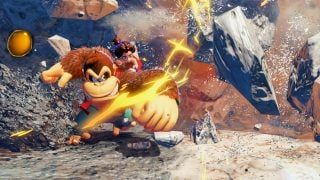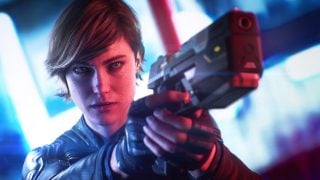It’s impossible to imagine the current state of the Kirby series without Kirby’s Return to Dream Land. The culmination of about four other attempts at a fresh game for the tough pink puff, the Wii era adventure paved the way for future games all the way up to Kirby and the Forgotten World. It’s all too fitting then that it would receive a remastering over ten years later.
The present Kirby landscape is quite different now, though. No longer are fans starved for home console visits to Popstar (the Switch alone has three now, alongside spin offs), and there’s more merchandise of the series characters coming out than ever. I’ve literally lost count of the amount of plush and plastic Kirbys in my home – a problem I’m happy to have, I assure you. That increased prominence paired with the gameplay evolutions and full 3D treatment Forgotten World brought begs the question of if a “modern classic Kirby” is even worth a second look.
That’s where Kirby’s Return to Dream Land Deluxe comes in. No longer sporting angy eyebrows on its box, this remaster instead embraces a touched up visual style for its HD debut alongside new side modes, Sub Games, and copy abilities. Like Nightmare in Dream Land and Super Star Ultra before it, RtDL Deluxe is a delightful extension of the Switch’s Kirby library, though one that stops short of matching those two handheld high points.
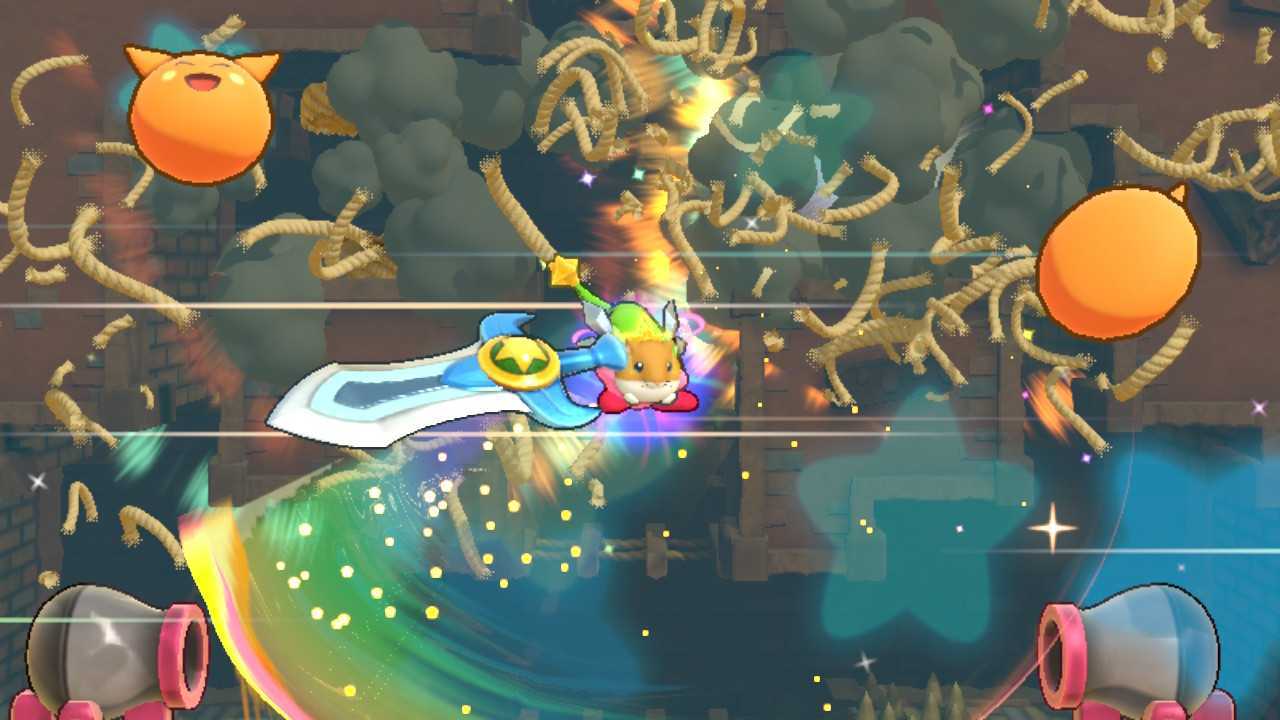
Return to Dream Land Deluxe’s main attraction is its Story Mode, being nearly identical to the Wii original. Kirby, Bandana Waddle Dee, Meta Knight, and King Dedede meet the dimensional traveler Magolor and find themselves tasked with repairing his starship after a crash landing. They do this by traveling through stages and collecting 120 Energy Spheres, usually by solving puzzles, and defeating bosses to earn more crucial ship parts. It purposefully harkened back to the structure of Kirby’s Adventure on the NES by design, with a dash of Crystal Shards for good measure, and makes for an enjoyable platforming experience through and through.
What set RtDL apart was its focus on multiplayer, allowing local drop in drop out co-op for up to four players. Being able to play as any of the four main characters (or as a group of Kirbys) adds to the fun of this one for sure, though after Star Allies included so many other additional characters it feels like a missed opportunity to push the playable cast here even further as well.
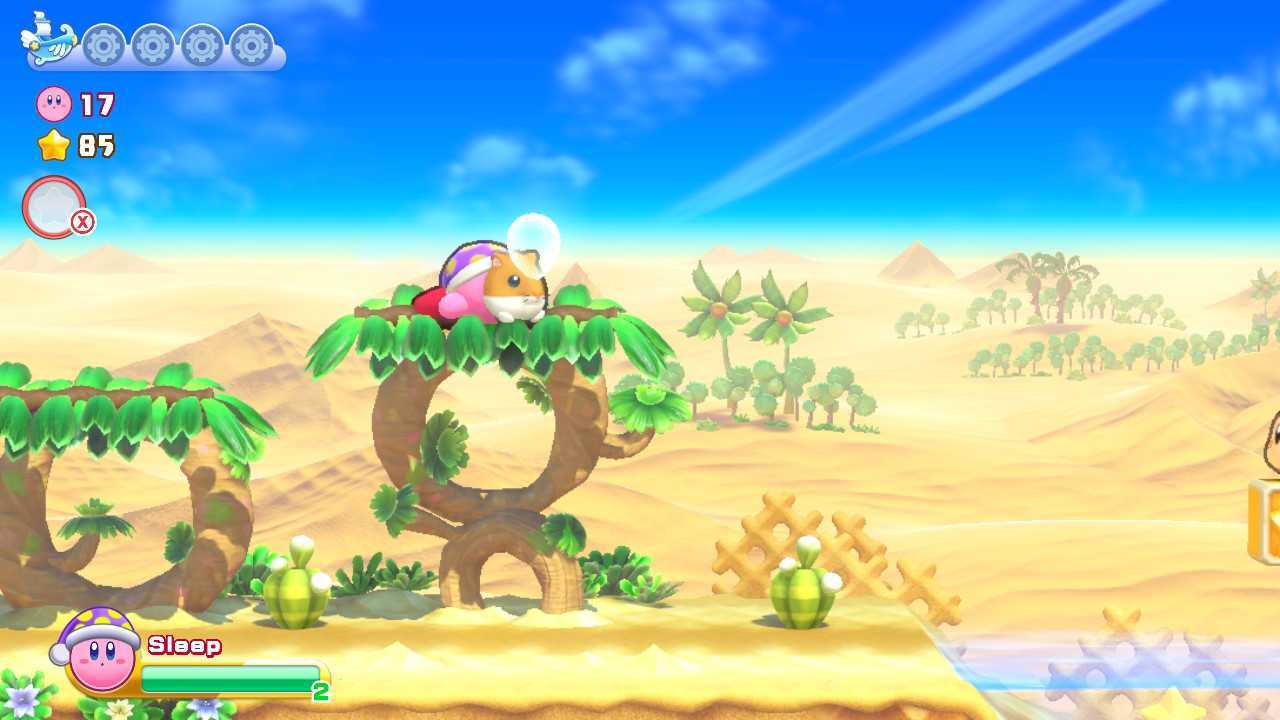
The most promoted addition to Story Mode are two brand new copy abilities – Mecha and Sand. Both are welcome and play to Return to Dream Land’s already impressive variety of powers and movesets. Mecha manages to be one of the more technical of the entire lineup, with several in-game pages worth of techniques for players to master. Sand is a bit simpler but no less impressive, with some strong potential for the series’ traditional Arena boss rush mode.
Anything previously said about RtDL will apply to Deluxe’s Story Mode. Super Abilities are still present as fun set pieces but lack the greater interactivity Planet Robobot brought with its Armors. The visual style is pleasing, particularly with respect to backgrounds and subtle visual flourishes (I love the way a layer of stars subtly undulates during certain sections) and gives the game its own identity compared to other Kirby Switch offerings.
Magolor himself is as entertaining as ever, now endeared to the series’ fanbase and placed prominently on the box art alongside the main cast. In Story Mode you can toggle on Helper Magolor, letting him pluck you out of bottomless pits, double your health bar, and other “New Funky Mode” style benefits. If anything, the cosmic troublemaker is even more a mascot for Return to Dream Land Deluxe than Kirby himself, being the star of not one but two new modes for the remake.
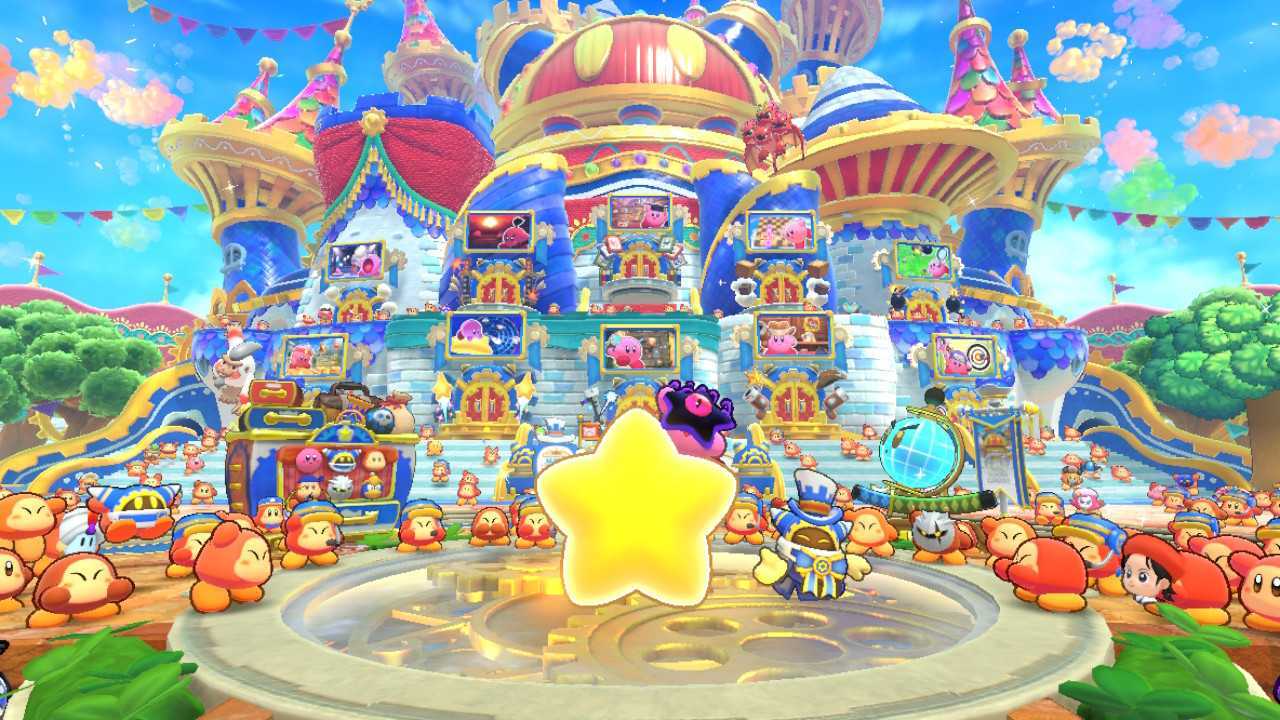
The first of these, Merry Magoland, is available early on and serves as a charming hub for all your Sub Game needs. The original Return to Dream Land’s extras were nothing to write home about, but Merry Magoland is absolutely worth your time. The amusement park aesthetic works, with bosses you defeat in Story Mode effectively becoming attractions and entertainers while Manager Magolor (now sporting a spectacular top hat) serves as the master of ceremonies.
The ten included Sub Games are a greatest hits from throughout the series, bringing back iconic minigames like Checkerboard Chase and Samurai Kirby with modern redesigns. Everything here can accommodate up to four players, making for a different kind of multiplayer experience that any fan of party games can appreciate.
Merry Magoland also makes for a completionist’s dream come true. By playing Sub Games you’ll work your way through a list of 100+ missions and gather up stamps that can be turned in for rewards usable both here and in other modes. The missions are effectively an achievement system, but those stamp rewards are the real prize. By playing enough you’ll unlock over 80 souvenir Dress Up Masks, referencing dozens of past Kirby characters, some for the first time in a game in over 25 years!
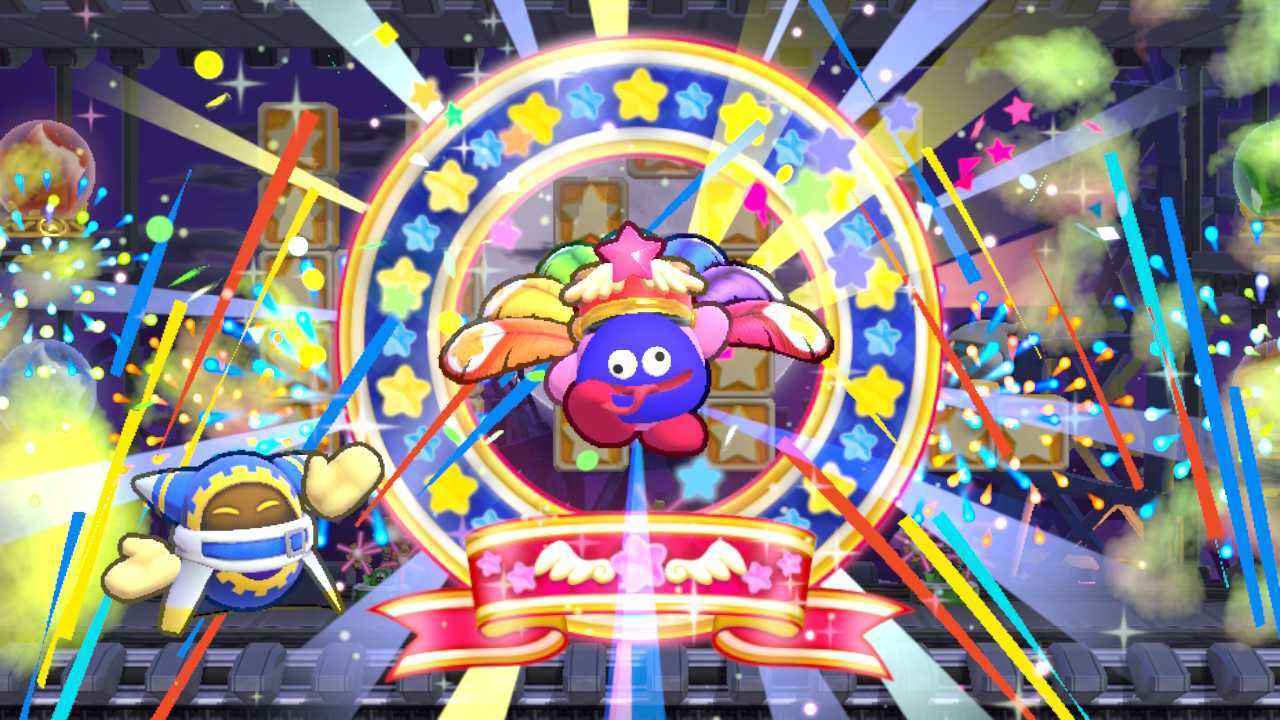
Last but not least is the Magolor Epilogue. Only unlockable by completing Story Mode, this all-new adventure tells of what happened to Magolor after the game’s events. The poor guy has lost all of his magic powers and finds himself stuck in a strange dimension, taking the form of unique stages compared to anything Kirby and the gang travel through. Everything here plays well into Return to Dream Land Deluxe’s visual motifs, and ultimately serves as a tasty slice of Kirby Lore™.
Really setting this one apart is that Magolor plays completely different from the rest of the playable gang. Instead of simply getting from start to finish in a stage, Magolor must chain together combos by attacking enemies and grabbing pick-ups quickly. The bigger the combo, the more magic power you reclaim, letting you slowly but surely unlock and upgrade the wizard’s moveset.
It’s an entertaining and unique approach, letting the Magolor Epilogue feel like a natural progression of the likes of Meta Knightmare and Dededetour. That said it is brief, and as you unlock more of his skillset it becomes particularly easy to build your combos enough to clear each stage with a platinum medal no problem. A challenge this is not, but I was addicted to cracking combo routes in each of its stages. The unique final boss of the mode also made a strong impression, serving as a show stopping moment for the entire Deluxe package with a satisfying and multi game-spanning conclusion.
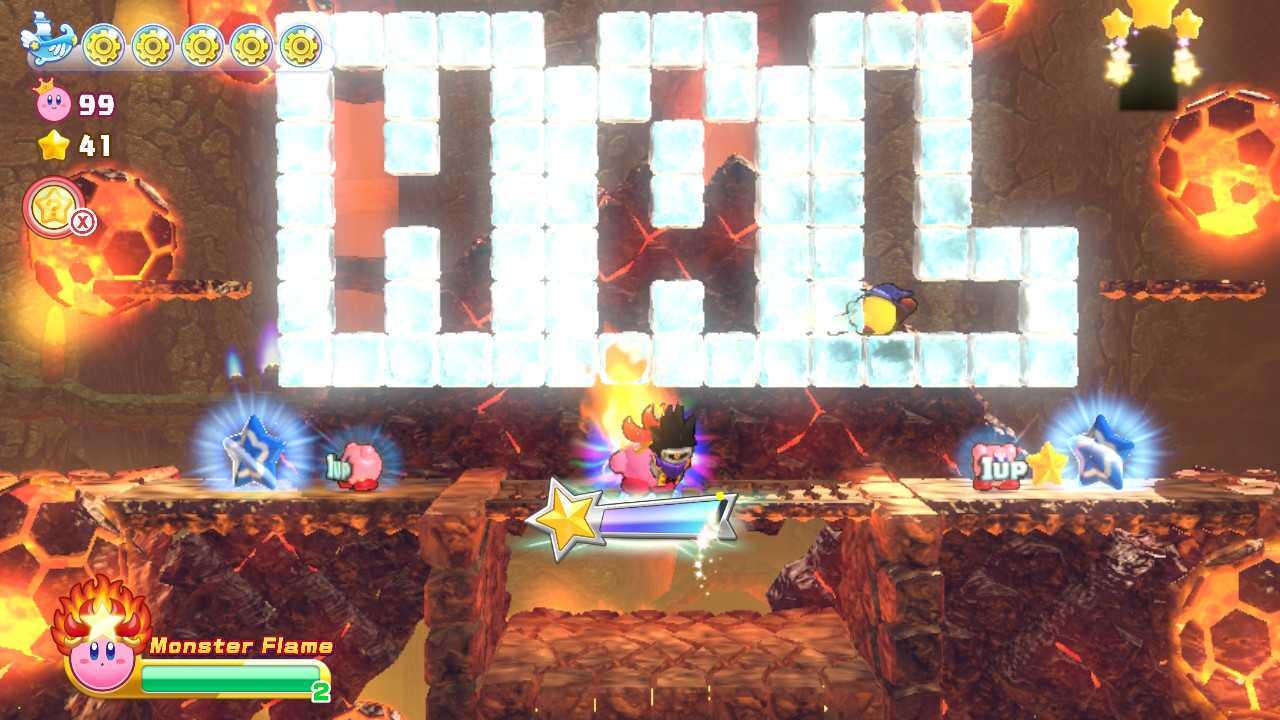
Kirby’s Return to Dream Land Deluxe is everything it needed to be and more. As a remaster of one of the most important and defining games in the series’ modern era, it succeeds as an enjoyable adventure with just enough newness to feel distinct – both from the Wii original and other Kirby games on Switch. It does show some age in its simplicity, and the core experience could’ve benefited from further additions, but the multiplayer offerings help give this one a niche that no other Kirby game has topped. That and the Magolor-led extra modes elevate the game to something that can float alongside its fellow Kirby remakes.
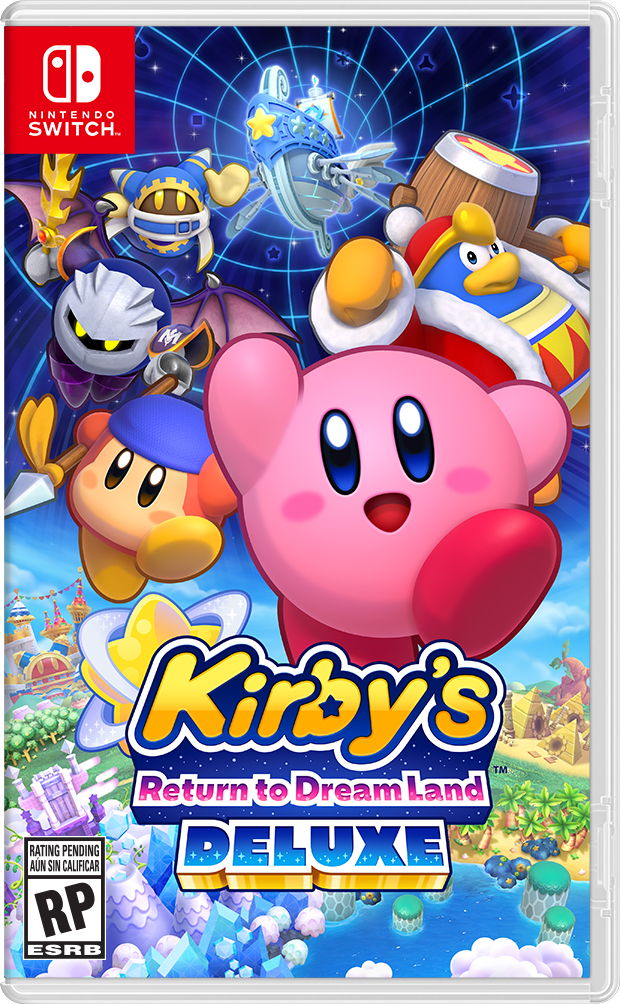
System: Nintendo Switch
Release Date: February 24, 2023
Categories: Platformer
Publisher: Nintendo
Developer: HAL Laboratory
